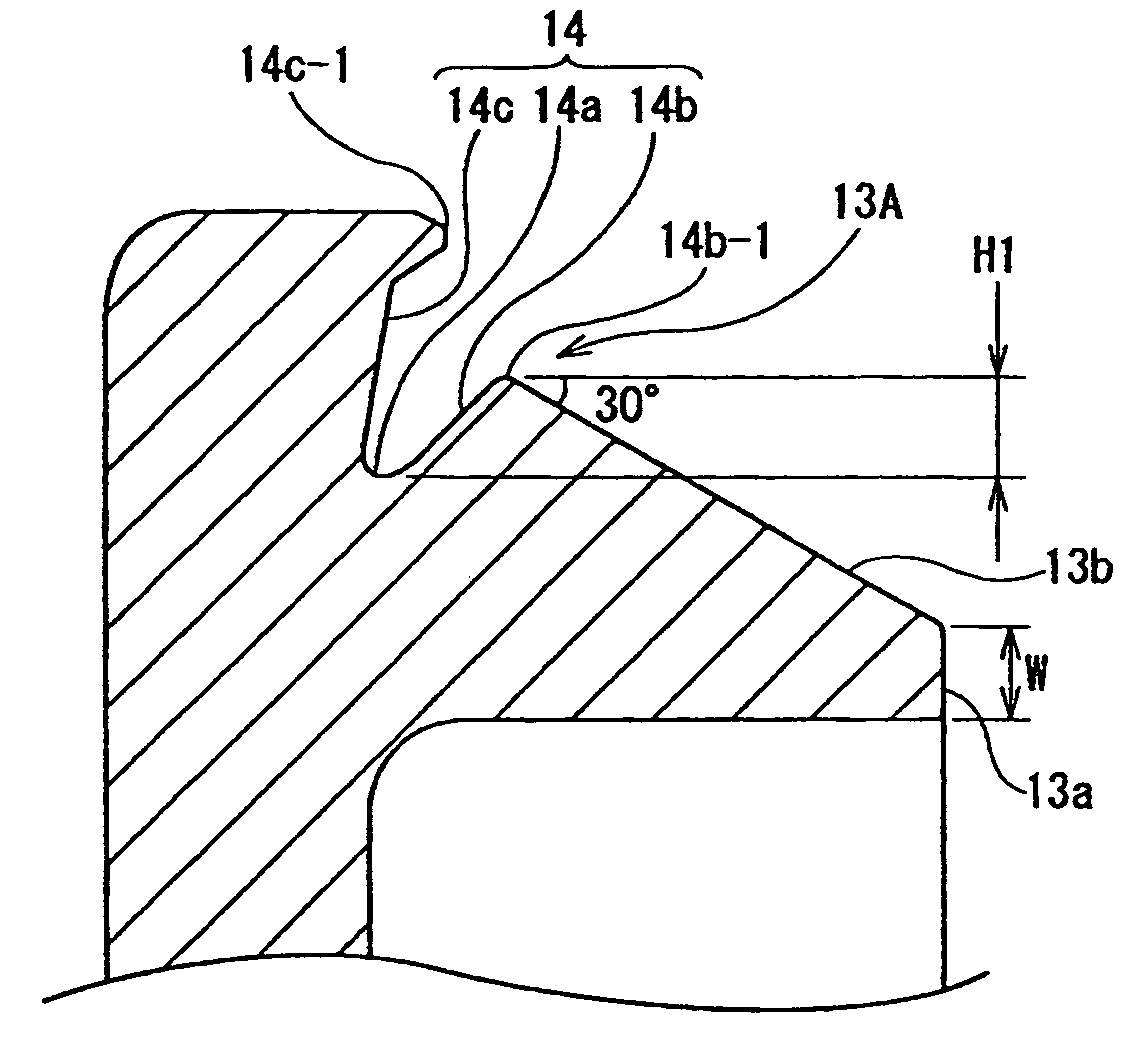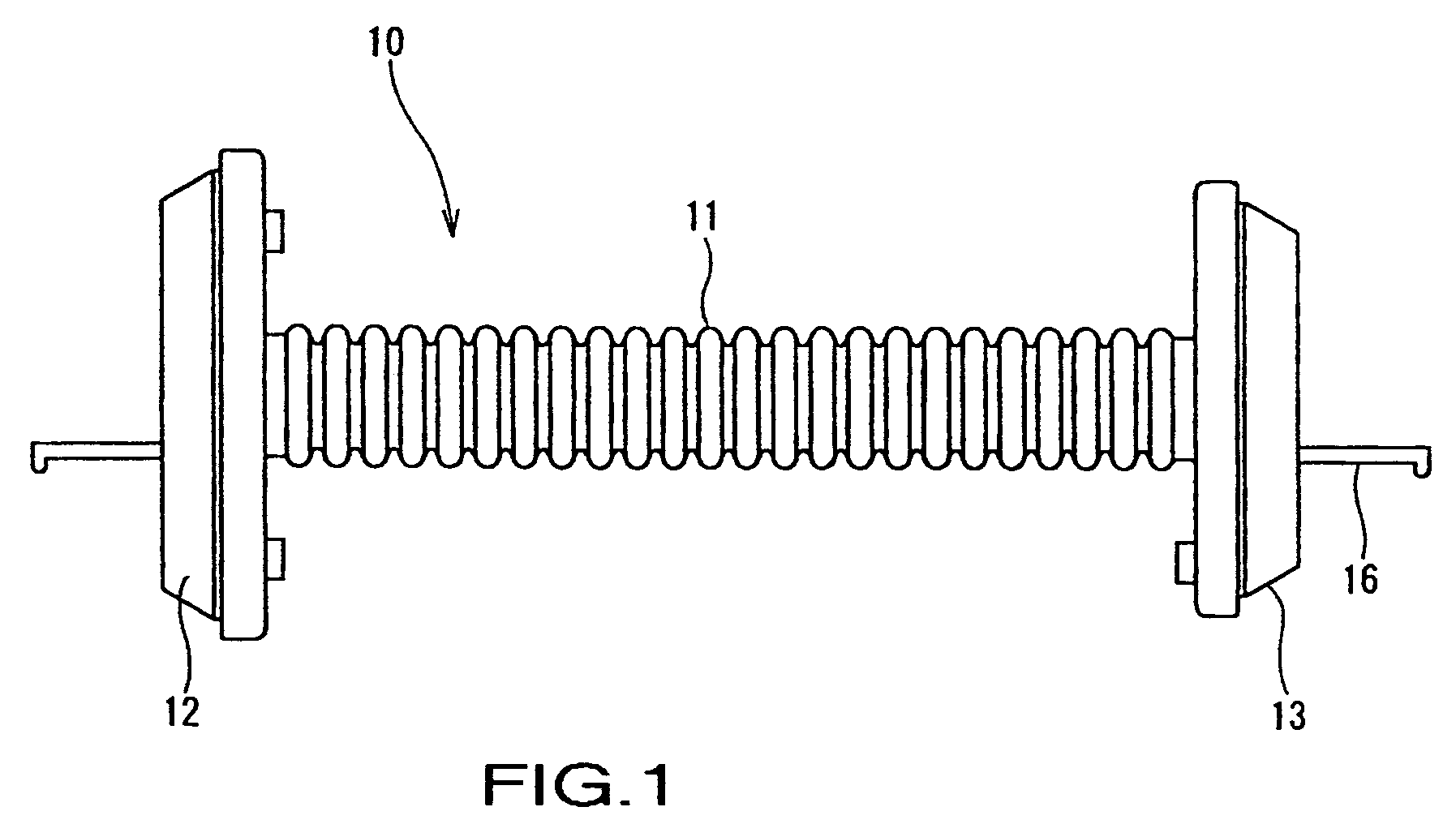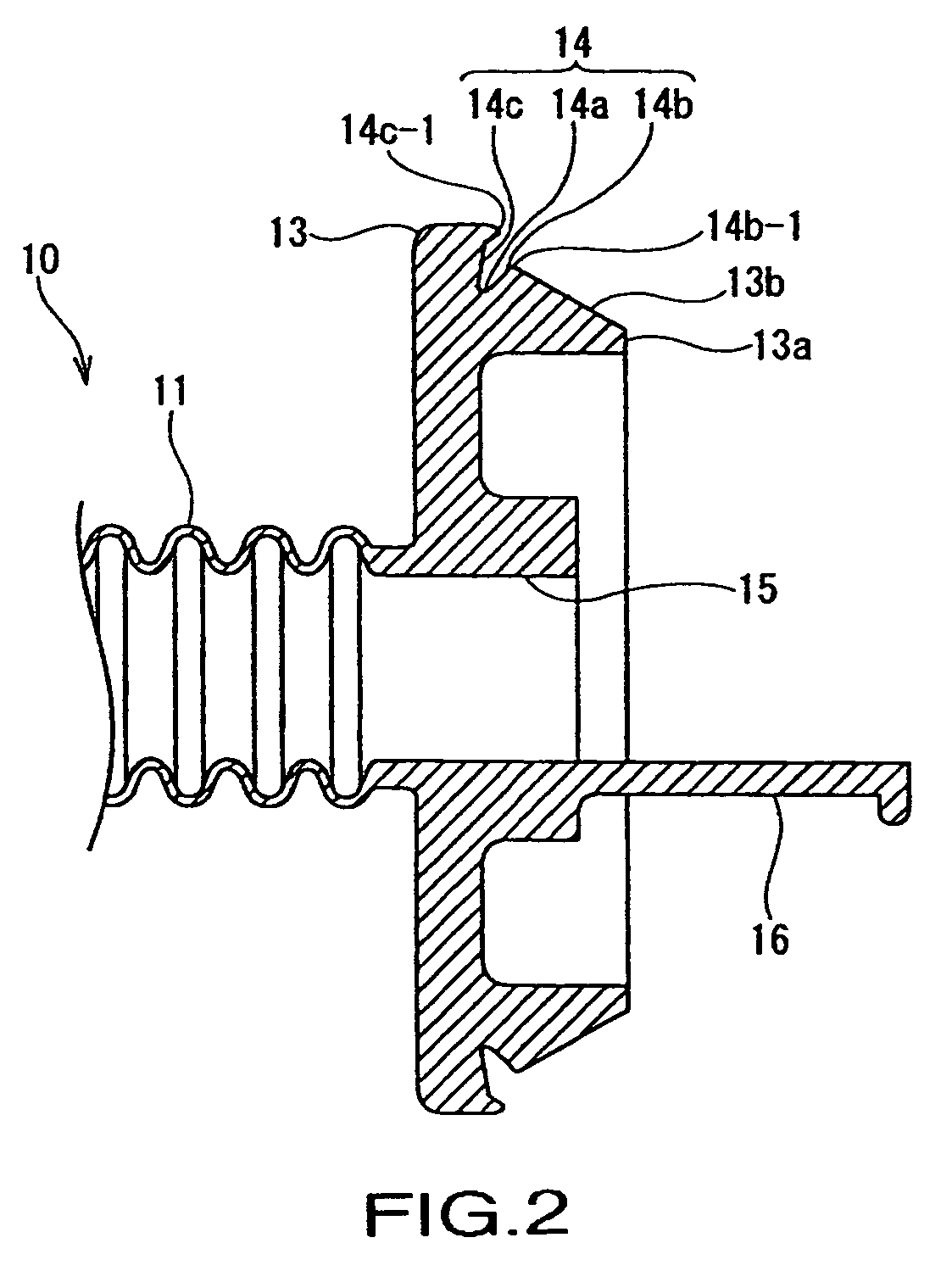Grommet
a technology of grommets and arc sections, applied in the direction of insulating bodies, cable arrangements between relatively moving parts, manufacturing tools, etc., can solve problems such as not applying, and achieve the effects of reducing the insertion force of circular arc sections, reducing the insertion force, and lessening the maximum insertion force of grommets
- Summary
- Abstract
- Description
- Claims
- Application Information
AI Technical Summary
Benefits of technology
Problems solved by technology
Method used
Image
Examples
Embodiment Construction
[0031]The particulars shown herein are by way of example and for purposes of illustrative discussion of the embodiments of the present invention only and are presented in the cause of providing what is believed to be the most useful and readily understood description of the principles and conceptual aspects of the present invention. In this regard, no attempt is made to show structural details of the present invention in more detail than is necessary for the fundamental understanding of the present invention, the description is taken with the drawings making apparent to those skilled in the art how the forms of the present invention may be embodied in practice.
[0032]The following describes preferred embodiments of the present invention with reference to the drawings. FIGS. 1 to 4, 5A, and 5B show an embodiment of the present invention, in which grommet 10 made of a suitable elastic material, such as, for example, rubber or an elastomer, is mounted on wire harness W / H. The wire harne...
PUM
 Login to View More
Login to View More Abstract
Description
Claims
Application Information
 Login to View More
Login to View More - R&D
- Intellectual Property
- Life Sciences
- Materials
- Tech Scout
- Unparalleled Data Quality
- Higher Quality Content
- 60% Fewer Hallucinations
Browse by: Latest US Patents, China's latest patents, Technical Efficacy Thesaurus, Application Domain, Technology Topic, Popular Technical Reports.
© 2025 PatSnap. All rights reserved.Legal|Privacy policy|Modern Slavery Act Transparency Statement|Sitemap|About US| Contact US: help@patsnap.com



